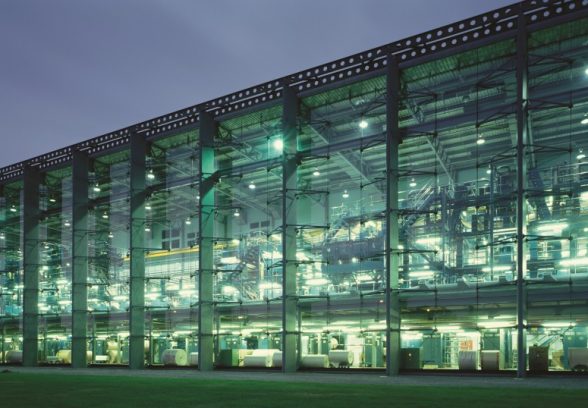This website uses cookies
This website uses cookies to enable it to function properly and to analyse how the website is used. Please click 'Close' to accept and continue using the website.



Following our call to protect the Financial Times Printworks in November of last year, we are delighted to announce that the building has been listed at Grade II*. This decision follows an objection launched by the Society in response to a request for a Certificate of Immunity, which would have prevented the building from being designated for five years. Our objection was supported by the architect, Sir Nicholas Grimshaw – one of the most significant of contemporary British architects and a pioneer of high-tech architecture, whose Western Morning News building in Plymouth was also listed at Grade II* in June of last year.
The award winning FT Printworks in Poplar was completed in 1988, and housed printing machinery that had the capacity to produce up to 250,000 papers a night. An influential example of hi-tech design, it won a number of awards and received widespread critical acclaim, with its success leading directly to commissions for Waterloo Station and Western Morning News; indeed, the later Plymouth building embodies essentially the same architectural concept.
A diaphanous glass envelope was developed specifically for the building. The glazing system was remarkable for its lack of mullions being instead bolted to aerofoil posts, a technique which allows for uninterrupted views into the interior. These posts also serve to support the transverse trusses which carry the load of the flat roof.
This bespoke glazed structure housed two separate zones divided by a ‘service spine’ which ran the length of the building. The northern zone housed state of the art press machinery which could be viewed by those passing by on the East India Dock Road, and was particularly striking when lit up at night – a true celebration of technological innovation. The southern zone housed offices, publishing rooms and a restaurant. The aluminium clad end sections of the building were originally used for paper storage, and could hold up to three weeks worth of paper at any one time. The aluminium panels themselves were vacuum formed, and the first application of the technique.
Central to the brief was internal flexibility, and its success in this aspect has been demonstrated in its effective change of use to an internet switching centre in 1995, and the fact that both the glazing system and the structure remain intact. Taking into consideration the tight budget and the short time scale for completion, the building is all the more remarkable, and clearly worthy of its new listed status.
We are hopeful that this decision will now pave the way for the listing of the Oxford Ice Rink, a third key example of Grimshaw’s pioneering hi-tech designs which the Society put forward for listing last year and which deserves the recognition and protection that its counterparts in Plymouth and London have recently received.

Become a C20 member today and help save our modern design heritage.